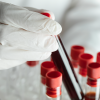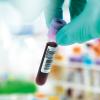Werner Leber argues the case for having HIV testing rolled out as standard in high-risk areas.

Werner Leber does not subscribe to the idea that medics should confine themselves to clinical settings. The Austria-born London GP has spent a good proportion of his career in laboratories, conducting research and working in interdisciplinary teams. “It’s a fantastic way to learn scientific rigour,” he says.
He now divides his time between general practice, a lectureship in primary care at Queen Mary University of London and the post of Clinical Lead for Long-Term Conditions at Tower Hamlets CCG.
Since 2009 the focus of his academic work has been translating point-of-care HIV testing into clinical practice. In 2015, he and a team from the university, including public health consultants, HIV specialists, academic GPs, health economists and mathematical modellers, published a paper in The Lancet HIV with the results of a clinical trial to find out the effectiveness of HIV testing in GP practices. In total, 5,000 patients in Hackney, East London, took the test as part of routine new-patient checks over two and a half years. “We showed clear evidence for effectiveness of the test in primary care. The test increased the rate of diagnosis four-fold and there was some evidence for earlier diagnosis, too,” he says.
Economic analysis
Werner and his colleagues also examined the economic effectiveness of the test, which they published also in The Lancet HIV in July this year. “The economic analysis was a novelty in this kind of research,” he says. “But that, along with everything else in this complex trial, was run with the precision of a lab experiment.” Quality assurance was a priority: the nurses and healthcare assistants involved in the trial were regularly sent serum samples to test and report back on. “We had to make sure they were performing the tests correctly, as well as interpreting the results in front of them correctly,” Werner says.
His team is still working through the data from this enormous trial – an analysis of staff and patient experience is yet to be published. But the main outcome of the research is that offering these tests routinely in high-prevalence HIV areas is effective in terms of increased diagnosis and is cost-effective, albeit over a number of years. Werner would like to see the test rolled out in all 74 high-prevalence areas in the UK, but it appears that cost concerns, for now, mean that CCGs are still reluctant to take the plunge.
Test accuracy
The test itself is nothing new: the trial used the readily available Insti rapid HIV finger-prick test. According to Werner, its sensitivity is 99.6% and specificity is 99.3%. “It was at that time and probably still is the most accurate test available, and it gives a test result in a couple of minutes,” he says.
The chances of false results were small, but still needed consideration. False negatives were the greater worry. “We calculated that we would have to test about 100,000 patients to miss one HIV diagnosis,” he says. “So, with 5,000 patients, there was a low chance. But a common concern about HIV point-of-care testing is the window period: the time during early infection where the test can’t see the infection. This is because it tests for antibodies, rather than the viral antigen. But the advice we gave around that was if someone had the test and it was negative, but they’d had sex without condoms in the previous three months, they should repeat the test later.”
False reactive (positive) results were also taken into account, although were less of a concern, because any reactive result would be followed up with a confirmatory test of a venous sample sent to a laboratory. The trial produced three false reactive results, which Werner says were down to test operator error. This is why quality assurance for those doing the tests was so important, Werner says. “If the public health teams decide to roll out the testing, it would be a disaster if they didn’t check on people’s competences.”
All about Werner
Qualified as a GP in Austria in 1998. Came to the UK in 2000 to do a masters in the molecular biology of infectious disease. Followed that with a PhD in malaria at the London School of Hygiene & Tropical Medicine
Out of 10 sessions a week, he spends four at his GP practice, five at Queen Mary University of Londonand one in his Tower Hamlets CCG role
Approximately 15 published papers
Lists his hobbies as mountaineering, long-distance walking, and reading on subjective topology
Sees collaboration as the answer to complex problems: “For a cell to live, it needs all its components to be present. Scale that up to research and the principle is the same: you’ve got to find people
to work together well to be able to achieve something,” he says.
Staff training
The nurses and healthcare assistants carrying out the tests were given training in processing the samples and in ways of talking to patients about the test. “Some were worried about mentioning a reactive result to the patient in the moment, but a lot of them had worked in sexual health before and for most it wasn’t a problem,” he says. “They were also given helpful phrases: for example, talking about the good treatment and the fact that you can have family and children.
So I think we did empower them with the right tools to do it safely for the patient and enjoyably for themselves.”
Although Werner’s vision of the test being rolled out hasn’t yet happened, he’s still positive that his research is pushing HIV testing in the right direction. “People have a sense that we can do something about HIV – not entirely eradicate it, but control it with very small transmission levels,” he says. “We have effective treatment. The quality of HIV clinics in the UK is so good that more than 90% of people who know they have the virus are on medication and more than 90% of those are actually virally suppressed. But we’re still a few thousand patients short of finding everyone who carries the virus. We need to test more people.”




